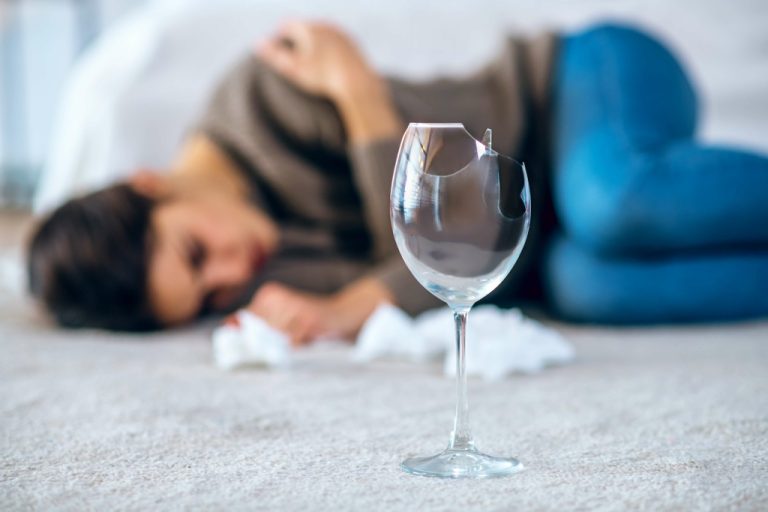While meeting attendance and household duties may be required, there isn’t regimented treatment programming present in the home. Sober living houses are often recommended for folks finishing up a drug rehabilitation program.Leaving the structure https://svich.com/articles.php?articleId=1913 of a treatment program can be jarring, sometimes triggering a relapse. As such, sober living houses serve as a space to transition into a life without addiction, developing tools and community while getting used to the demands of daily life.
The Goals of Sober Living Houses
- His commitment to sharing stories of hope and resilience has established him as a credible and respected figure in the addiction treatment community.
- Like, it was such a new and modern and almost silly word,” Woodard said.
- It gave the program 30 days — until Jan. 8, 2024 — to remove the detox requirement from its policy and address the other areas of noncompliance.
- These skills will enable someone to function well in society when they leave the facility.
- And COBS had been referring clients to ACTS, the mental health company owned by Barthelmess’ son, which experts say is likely a conflict of interest.
Typically, as long as you follow the rules, you may live in the home for as long as you want. You can enjoy healthy meals in the evening, followed http://uajazz.com/2011/05/drum-kolo-zbirka-2cd/ by group therapy sessions. Nighttime is often reserved for free time when you can call loved ones, read books, or watch television.
Do Sober Living Houses Work?
- It has been found that by living in a male or female only environment, distractions are decreased.
- A sober living home is a temporary transitional living space for people recovering from substance abuse.
- Halfway houses traditionally serve individuals recently released from incarceration, acting as a halfway point between prison and their own residence.
- Sober homes allow individuals to continue with elements of their recovery treatment even after their formal rehab program has finished.
- The staff is trained to handle rule infractions carefully and maintain detailed documentation for transparency.
Breaking these rules can mean losing your place in your sober living home. You could be expelled right away, or you could be expelled when you break the rules more than once. It pays to know what the sober living rules are, and it pays to follow them. National Library of Medicine, all residents must abide by the rules, and abstain from alcohol and/or drugs. By house managers enforcing these rules, it helps to properly manage the house and keep it safe for everyone living in it.
WHAT IS IT LIKE TO LIVE IN A SOBER LIVING HOME?
These facilities still exist today and are used primarily for those who have been incarcerated or are unhoused. Halfway houses are often designed specifically for those that received treatment for addiction to drugs or alcohol while in prison. Halfway houses can be government funded or run by private organizations that receive government grants.
This peer support can be invaluable in maintaining long-term recovery and preventing relapse. Sober living houses (also called halfway houses or recovery houses) refer to group residences for people recovering from addiction. It also provides a therapeutic space where you can get support from peers who are also recovering from substance abuse. There are also specific types of sober living homes that cater to your gender, age, and in some cases, profession. Rules in sober living houses are enforced by trained staff members who document any infractions. Severe breaches, mainly related to substance use, may result in the resident returning to a rehabilitation program.
- By fostering a sense of community, stability, and safety, these standards help residents focus on their recovery journey without the added stress of instability or unsafe conditions.
- Some insurance policies may limit your care providers or may want you to contribute to the cost.
- After filing her complaint in October 2023, Ally said the state victim assistance council never interviewed her to verify the claims.
- It is a good option as the next step for those who are moving out of an inpatient facility.
- She’s posted survivors’ stories on Facebook, though the posts don’t include names.
- Therapeutic Communities (TCs) are an example of level four sober home living.

There are no counselors or licensed mental health professionals in most sober living homes. In most cases, these are homes that are run by people who are also in recovery. When you transition from an inpatient or correctional facility, you might want to spend some time in a sober house to get used to living without drugs or alcohol. According to the National Library of http://web-compromat.com/5926-43-html/ Medicine, a sober house is for people who need a drug free environment while transitioning back into society. There are some common criteria and rules for these sober living facilities. Many people recovering from drug addiction or alcoholism reassess their closest relationships and friendships, often finding that many relationships were grounded on substance abuse.

At a sober living home, you can benefit from a house manager who will oversee operations, and you can count on other residents for help as you move toward independent sober living at home. Obviously since, it is a sober house drug and alcohol use is not tolerated. Most sober houses will expel anyone caught using or distributing drugs or alcohol. Many studies have shown that the best-practice rehabilitation treatment provides continuity of care post-discharge.

Common House Rules of Sober Living Homes
Sober living homes are meant to be safe, supportive environments that emphasize the importance of building a community and camaraderie with others. Individuals typically enter an SLH after being discharged from a clinical treatment center before returning to their previous home and routine. Halfway houses, on the other hand, are typically more structured and may be mandated as part of a court-ordered treatment program. Halfway houses are often reserved for those who have completed a residential treatment program and require additional support and supervision as they transition back into the community. Residents in halfway houses may be subject to more stringent rules, including mandatory curfews and drug testing.

Commentaires récents